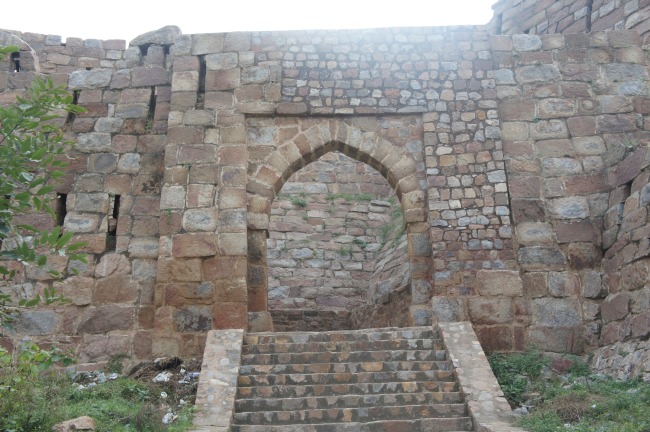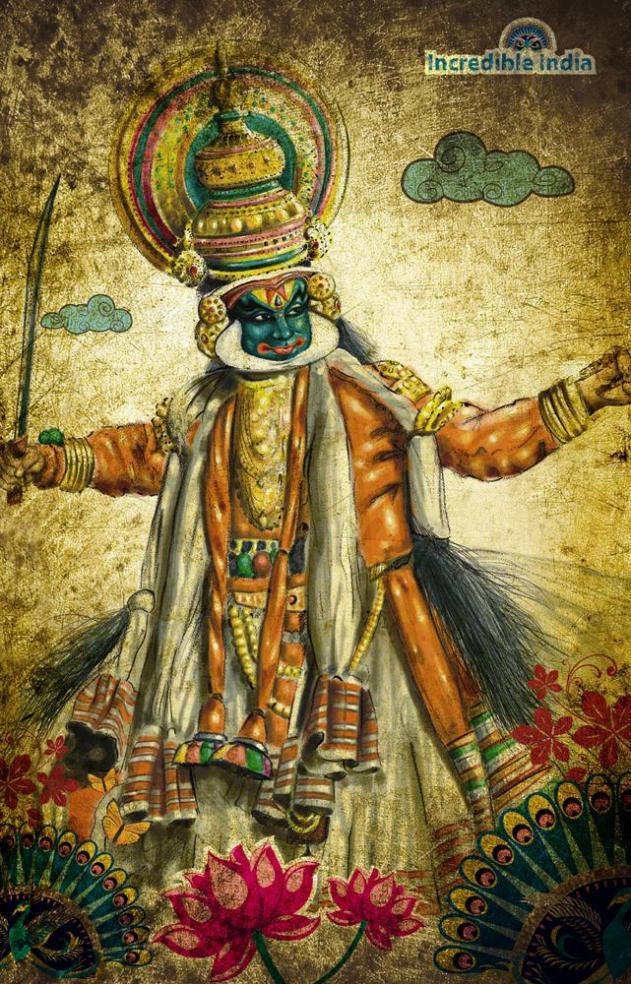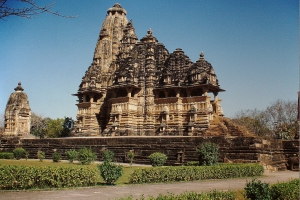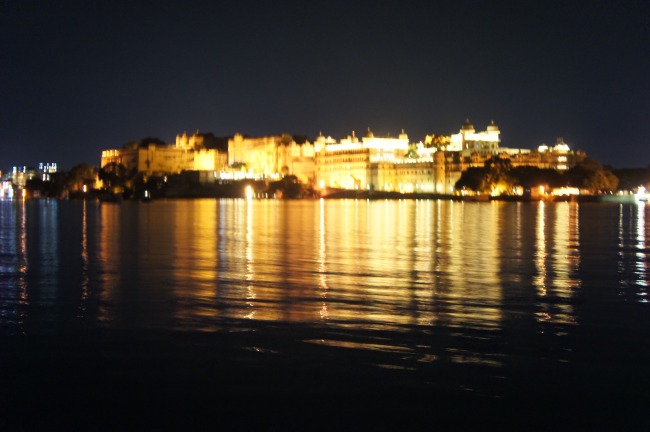1) LAL GUMBADH
Location : Malviya Nagar, Southeast From Delhi-Mehrauli Road
Also Known As : Lal Gumbad Or Rakabwala Gumbad
Built In: 1397
Memorial of : Shaikh Kabir-Ud-Din Auliya 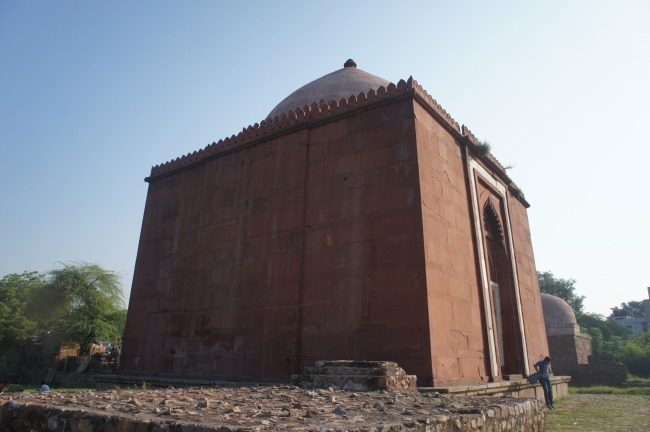
Immediately before getting Malaviya Nagar by the road forking southeast from Delhi-Mehrauli road, one sees on the south of the road Shaikh Kabiru’d-Din Auliya’s tomb, also known as “Lal-Gumbad” or “Rakabwala Gumbad”.
Lal Gumbad consists of a square chamber with battered walls faced with red sandstone and the roof surmounted by a plastered conical dome, resembling thus Ghiyath-ud-Din Tughluq’s tomb. Its entrance is on the east through a pointed arch, decorated with marble bands.
The iron rings on its western wall are believed to have been fixed for scaling up the walls by thieves, who are said to have removed its golden finial, from which it has acquired its popular name of Rakabwala Gumbad.
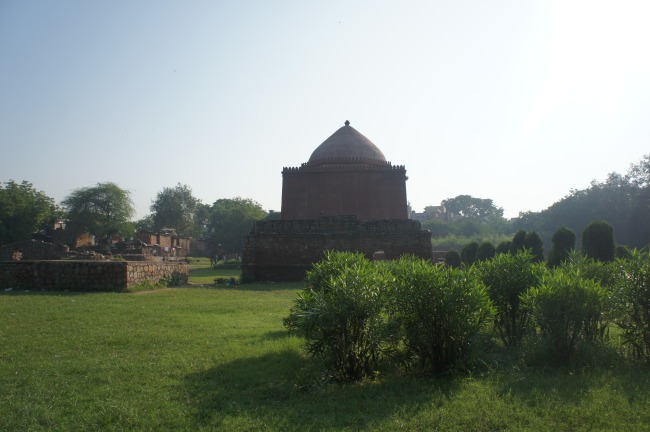
In 1937 the mortal remains of Saikh Kabir Ud Din Auliya were buried here. The construction of this gumbadh was stopped in the middle of the 14th century when it was fully constructed.
2) TOMB AND MOSQUE AT SADHNA ENCLAVE
Location : Sadhna Enclave
Built in : 15th Century
Memorial Of : Unknown
These two buildings are located in Sadhana Enclave and can be approached from the Ring Road. As one approaches from the main road, the building on the right is the Baradari (Mosque). It comprises of a seven-bay wide and three-bay deep open pavilion whose original use is unknown. Some scholars suggest that this could have been a mosque but very little remains of the western wall to conclusively prove this. The building belongs to the Tughlaq period and probably dates to the late fourteenth century. The front row is made of double columns and a chhajja (dripstone), supported by small brackets that runs across the entire front above the arched openings.
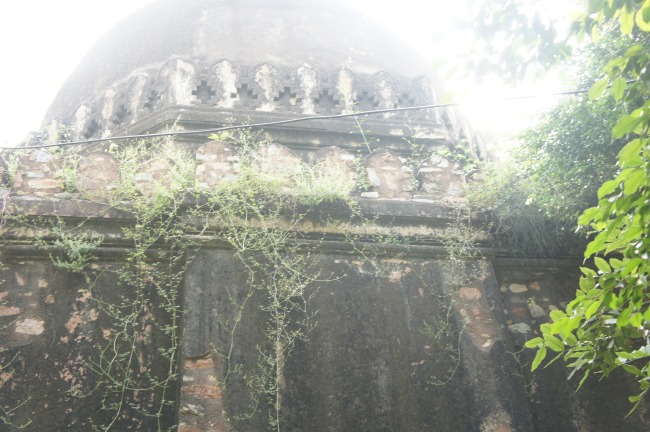
This tomb belongs to the Lodi period. It is a domed structure measuring 9 square meters, with arched entrance on north, south and east, while the west has a mirhab. The interior of the tomb has a double row of blind arcades. The dome springs from an octagonal drum.

This Tughlaq period built baradari has an arcaded wall with seven bays from north to south and is 3 bays deep. It is constructed of rubble finished with plaster. There is an outer row of double columns and chajja runs over these arched openings on the eastern side.
Location : Village Kalu Sarai, Near IIT Flyover
Built in : 1351 AD
Used as : The palace of Muhamamd bin Tughlaq
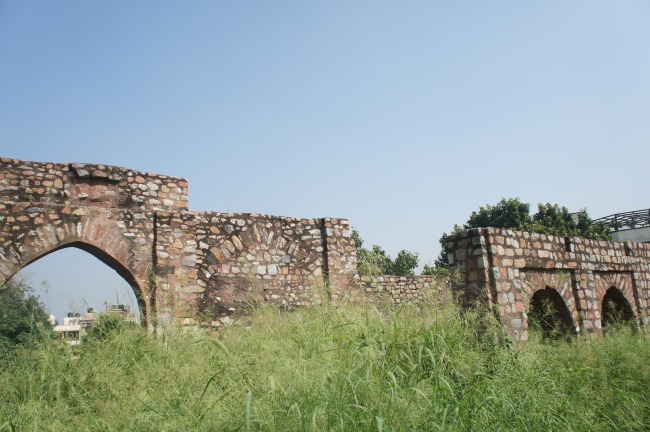
This was the palace of Muhamamd bin Tughlaq (1300-1351), a sultan who was so eccentric that he forcibly moved Delhi’s entire population 700 miles south to the Deccan. Having survived many transformations, Bijay Mandal, or what is left of it, is like difficult poetry with the first and last verses missing.
Historians call it Delhi’s most puzzling monument. They guess it was the site of the famous thousand-pillared hall; the pillars were of painted wood and the roof exquisitely carved. All that is gone.

There is an octagonal pavalion on the roof. But the ramp that leads up ends in a padlocked door. Daring boys climb the walls for a majestic view of the city, but don’t risk it. The northern side of the main hall looks to a burial ground, which houses the shrine of the sufi saint Sheikh Hasan Tahir. Beyond it is an arcaded ruin.
The southern side offers a peek into the private lives of the residents of Begumpur village. If the wind is favorable, you hear the barking of dogs from the bungalows of Sarvapriya Vihar. The silence of the stones is the noisiest.
4) AZIM KHAN’S TOMB
LOCATION : Between Lado Sarai road and the main Mehrauli Road
BUILT IN : Early 17th Century
MEMORIAL OF : AZIM KHAN.
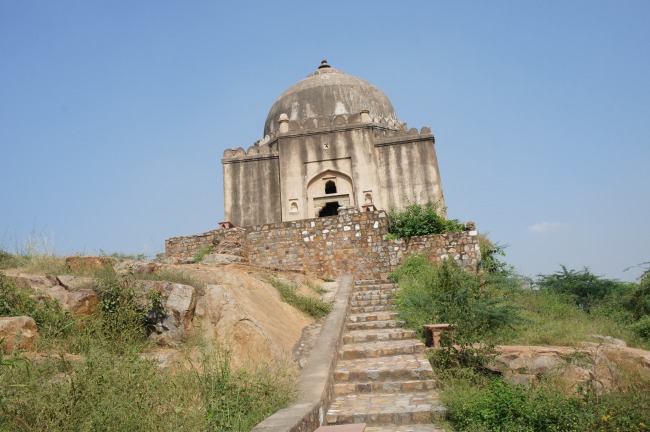
Though no one is exactly sure who Azim Khan was, most historians concede that he was a nobleman in the court of Mughal emperor Akbar (ruled AD 1556-1605). Legend has it that it that when Akbar’s armies led by his valiant generals were furthering his expansionist policies & annexing small kingdoms in different parts of the country, his foster brother & powerful general Adham Khan would capture a territory for Akbar & enslave all the women in the captured land & add them to his harem.
According to experts, it is evident from the tomb’s unique architecture that it was built during early Mughal rule in the city. In the Intach listing, the monument is graded `B’ in terms of historical relevance. An official of Intach Delhi Chapter said: “There is uncertainty about who the tomb is named after.
Some historians believe it is Azim Khan while others say it is Akbar Khan.” Despite several attempts by historians, Azim Khan remains a mystery as there is no documentation or data pertaining to him.

LOCATION : Tughlaquabad, Near Tughlaquabad Fort
BUILT IN : 14th Century
BUILT BY : Mohammed-bin-Tughlaq
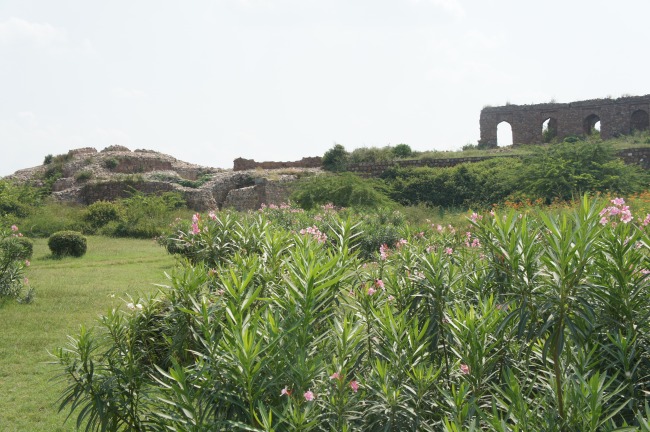
Built by Mohammed-bin-Tughlaq, Adilabad Fort is referred to by historians as the fourth fort of Delhi, in the footsteps of famous contemporaries like Red Fort, Old Fort and the adjacent Tughlaqabad Fort. But despite being under the protection of the Archaeological Survey of India (ASI), Adilabad Fort remains a rare, hidden treasure of Delhi with very few people even aware of its existence.
The first obstacle any visitor wanting to explore the fort faces is the lack of proper access. Even asking locals in Tughlaqabad area for directions elicit blank looks. A maze of kuchcha paths lead to the beautiful fortress located southeast of Tughlaqabad Fort, partially hidden by foliage and undergrowth.
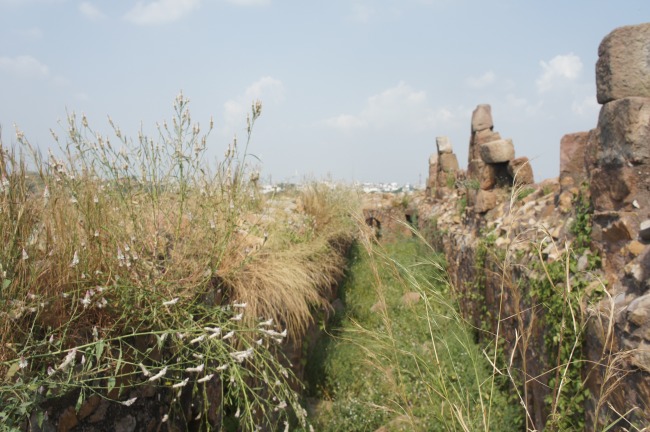
Once in Adilabad, it’s like stepping back in time. Broken steps and a kuchcha slope lead into the fortress and one can see that most of the structure is in ruins. According to historians, Adilabad began as a small fort with massive ramparts protecting it. In comparison to its predecessor, the mammoth Tughlaqabad Fort, Adilabad is a dwarf as far as stonework is concerned.
Though much smaller than Tughlaqabad Fort, Adilabad is a treat for any visitor. Much of the fort lies in ruins but fortunately, the basic structure has survived the ravages of time. Conservationists have called for a more elaborate effort from the ASI to protect this legacy of Mohammed-bin-Tughlaq. ”The area is surrounded mostly by villagers which make it difficult to develop both Tughlaqabad and Adilabad forts as proper tourist destinations. But the potential of the fortresses are huge. There are not as many Tughlaq structures in Delhi as there are Mughal or even colonial.
